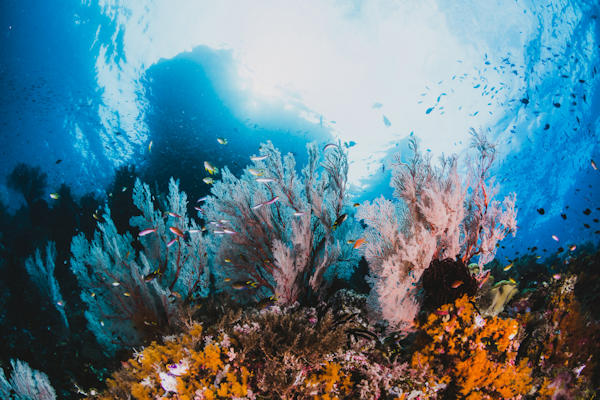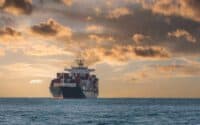Maritime Emission Standards: A Comprehensive Look at IMO 2020

The International Maritime Organization (IMO), a specialized agency of the United Nations, plays a pivotal role in ensuring that shipping remains safe, efficient, and environmentally responsible. As the global standard-setting authority for the safety, security, and environmental performance of international shipping, its mandate is to create a regulatory framework that is universally adopted and implemented. One of its most significant and recent directives has been the sulfur cap implemented in 2020. This initiative, commonly referred to as “IMO 2020,” represents a monumental step forward in reducing marine pollution, emphasizing the urgency to address the detrimental effects of sulfur emissions from ships.
* Please send feedback/suggestions to editor @ shipuniverse.com
Background: The Issue with Sulfur:
Ships, especially those using heavy fuel oils, have historically been significant contributors to sulfur emissions. When burned, these fuels release sulfur oxides (SOx) into the atmosphere, which have a range of harmful effects.
a. Impact on Human Health: Sulfur oxides are notorious for causing respiratory problems and exacerbating existing respiratory diseases, particularly among children and the elderly. Moreover, when SOx interacts with other compounds in the atmosphere, it creates fine particulate matter. These tiny particles can penetrate deep into the lungs, leading to a host of respiratory and cardiovascular issues. Studies have also shown links between areas with higher SOx pollution and increased hospital admissions.
b. Effects on the Marine Environment: The marine environment doesn’t escape the adverse effects of sulfur emissions. When sulfur oxides mix with the atmosphere and react with water, they form acid rain. This not only harms aquatic life but also affects the water’s chemical balance, leading to issues like ocean acidification. Ocean acidification has cascading impacts on the marine food web, particularly affecting organisms that rely on calcium carbonate for their shells and skeletons, such as corals and certain types of plankton. Additionally, sulfur emissions contribute to haze and reduced visibility in marine environments, impacting both natural ecosystems and human activities at sea.
IMO 2020: The Sulfur Cap Directive:
The IMO 2020 regulation, officially called the “MARPOL Annex VI regulation,” marked a significant change in the permissible sulfur content in marine fuels. Effective from January 1, 2020, the regulation slashed the allowable sulfur content in ship fuel oil from the previous 3.5% limit down to 0.50%.
a. Comparison with Previous Sulfur Limits: Before IMO 2020, the globally recognized sulfur cap stood at 3.5% by mass. This benchmark, in place since 2012, was a step up from even earlier limits. The drastic reduction to 0.50% was designed to curtail sulfur oxide emissions, leading to healthier oceans and air quality around coastal and port areas.
b. Enforcement Measures and Penalties for Non-compliance: Ensuring compliance with the 2020 sulfur cap required meticulous oversight. Ships were mandated to carry a compliant fuel oil non-availability report if they were unable to obtain the specified fuel. Additionally, ships had to maintain detailed logbooks of fuel oil transfers and operations, open for inspection by port states. Non-compliance could lead to hefty fines, detainment of ships, or even bans from certain ports.
Immediate Repercussions for the Shipping Industry:
With such a monumental shift, the shipping industry inevitably faced numerous challenges in adjusting to the new landscape shaped by IMO 2020.
a. Challenges Faced by Ship Owners in Compliance: Complying with the sulfur cap was not merely a matter of switching fuels. For many, the transition meant making hard decisions about retrofitting ships or even decommissioning older vessels. There was also a challenge of fuel availability in certain parts of the world, especially in the initial phases of the regulation’s enactment.
b. Economic Implications: The transition had substantial economic repercussions. The demand for low-sulfur fuel led to price surges, significantly raising operational costs. Retrofitting existing ships with exhaust gas cleaning systems, commonly known as “scrubbers,” demanded hefty investments. While these changes meant higher expenditures in the short term, they were weighed against potential penalties and the larger strategic goal of sustainable operations in the future.
c. Response of the Industry: Despite the challenges, the maritime industry showcased its resilience and adaptability. Many operators adopted scrubbers, allowing ships to continue using higher-sulfur fuel while reducing emissions to compliant levels. Simultaneously, there was a noticeable shift towards Very Low Sulfur Fuel Oils (VLSFOs) and Marine Gas Oils (MGOs). Some forward-thinking companies even began exploring alternative propulsion methods, like liquified natural gas (LNG) and battery-operated vessels, foreseeing the broader shift towards greener shipping.
Implications for the Global Fuel Market:
The aftermath of IMO 2020 reverberated far beyond the shipping industry, reshaping global fuel markets and refining strategies.
a. Changes in Demand and Pricing: With the introduction of the sulfur cap, the demand for high-sulfur fuel oil (HSFO) plummeted while the demand for very low-sulfur fuel oil (VLSFO) surged. As a result, the price disparity between HSFO and VLSFO widened. This market dynamic posed profitability challenges for those invested heavily in HSFO while creating lucrative opportunities for suppliers of VLSFO.
b. Refineries’ Adaptation: Refineries worldwide found themselves at a crossroads. While some had the capability to produce VLSFO, others had to undertake significant modifications to adapt. Additionally, refineries that could produce cleaner fuels had a competitive edge, leading to a potential shift in global refining leadership.
c. Potential for Alternative Fuels: Although VLSFO emerged as the immediate solution, the regulatory push opened doors for alternative fuels. Liquefied Natural Gas (LNG) became an attractive option due to its relatively cleaner combustion properties. Simultaneously, biofuels, derived from renewable sources, gained traction as a sustainable fuel solution, although challenges like scalability and cost remained.
Positive Outcomes for Marine Ecosystems:

The driving force behind the stringent IMO 2020 regulation was to safeguard marine ecosystems and, by extension, human health. As ships began to comply, the oceans started reaping the benefits.
a. Reduction in Sulfur Oxide Emissions: One of the most immediate and tangible benefits was the significant reduction in sulfur oxide emissions. Coastal cities, especially those near major ports, experienced improved air quality. As a result, respiratory-related health issues among their populations began to decline.
b. Positive Effects on Marine Life: Reducing sulfur emissions had a cascading positive effect on marine ecosystems. Ocean acidification, a major threat to marine life, especially to creatures like mollusks and certain types of plankton, began to show signs of slowing. Reduced pollutants also meant clearer waters, enhancing marine biodiversity.
Challenges and Criticisms:
Despite the undeniably positive impact of IMO 2020 on the environment and human health, it wasn’t without its criticisms and challenges.
a. Criticism of Open-loop Scrubbers: One of the primary methods adopted by shipowners to comply with the sulfur cap was the installation of exhaust gas cleaning systems, popularly known as scrubbers. However, open-loop scrubbers, which discharge wash water into the sea, faced significant criticism. Environmentalists raised concerns over potential water pollution, as the discharged water often contained harmful substances. Several countries and ports went as far as banning the discharge from open-loop scrubbers in their territorial waters.
b. Supply Chain and Fuel Availability: The transition to VLSFO was not smooth sailing. Many regions faced VLSFO shortages, leading to supply chain disruptions. Ships, at times, had to deviate from their original routes to refuel, causing delays and logistical challenges.
c. Non-compliance and Enforcement Issues: While many in the industry embraced the changes, concerns about non-compliance lingered. The vastness of the oceans made monitoring a challenge. There were fears that some ships, especially those operating in less-regulated regions, might flout the regulations. Ensuring universal compliance without compromising the level playing field for all stakeholders became a significant challenge for the IMO and enforcing bodies.
Looking Ahead: The Future Post-IMO 2020:
The maritime industry, having navigated the stormy waters of IMO 2020, now looks to chart its course in a new era.
a. Ongoing Monitoring and Enforcement: While the initial phase of implementation is over, the journey is far from complete. The IMO and affiliated bodies continue to refine their monitoring mechanisms, ensuring that the sulfur cap’s benefits are not diluted by non-compliance. Collaborative efforts with member states are bolstering a global framework for stringent checks and enforcement.
b. Encouraging Industry Innovation: The industry’s response to IMO 2020 has shown its capability for rapid innovation. Future propulsion methods, from hydrogen fuel cells to full-electric systems, are on the horizon. Additionally, research into alternative fuels, like ammonia and methanol, offers promising environmentally-friendly prospects.
c. Digital Technology’s Role: The digital revolution has not left the shipping industry untouched. Advanced tracking systems, integrated with AI, offer real-time monitoring of ships, ensuring compliance with regulations. Satellite surveillance, combined with machine learning algorithms, can detect sulfur emissions, holding ships accountable even in the vast, open oceans. The fusion of technology and regulations promises a greener, cleaner future for the maritime industry.
Additional Resources
Websites & Organizations:
- International Maritime Organization (IMO): This is the primary source for all regulations and guidelines related to international shipping.
- Website: www.imo.org
- Specific publications from the IMO on MARPOL Annex VI and related matters will be invaluable.
- World Shipping Council (WSC): They often have insights and reports related to shipping regulations and their impact on the industry.
- Website: www.worldshipping.org
- BIMCO: As the world’s largest direct-membership organization for shipowners, charterers, shipbrokers, and agents, they offer a wealth of information on industry trends and regulations.
- Website: www.bimco.org
- Ship & Bunker: This is a leading news and information website related to marine fuel, offering regular updates and articles on topics like IMO 2020.
- Website: www.shipandbunker.com
- S&P Global Platts: They offer comprehensive coverage of energy markets, and their news and analysis section might have insights into the impact of IMO 2020 on fuel markets.
- Website: www.spglobal.com/platts
Books:
- “Marine Fuels: A Comprehensive Guide” by Nigel Draffin: This book provides a comprehensive guide on marine fuels and the implications of recent regulations on them.
- “Shipping and the Environment” by Carl Carlsson: Though a bit older, this book provides insights into the impact of shipping on the environment and vice versa.
- “Reducing the GHG Emissions of Ships” by Tristan Smith and Eoin O’Keeffe: This dives deep into the broader picture of greenhouse gas emissions from ships, beyond just sulfur emissions.

Do you have a Maritime Product or Service that may be of interest to Shipowners? Tell us about it here!
Do you have feedback or insights? Please reach out to editor @ shipuniverse.com



